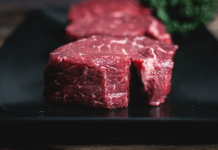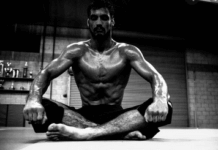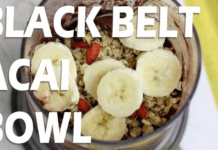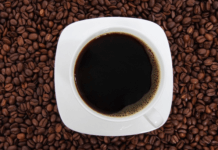If the perfect diet existed, it would allow you to build muscle without gaining fat and burning fat without losing lean mass in the process. That’s actually the aim of the ketogenic diet. The ketogenic diet limits the intake of carbohydrates and maximizes the consumption of fats. Those who follow it eliminate almost all carbohydrate foods from their diet, such as bread, pasta, rice, beans, sweets and milk. Carbohydrates intake can’t exceed 50 grams per day and, in more extreme cases, are totally eliminated from the diet from food. There’s an increase in the intake of foods that are rich in fats, while also maintaining a good amount of protein in the diet. This compensation of the carbohydrates by fats causes the body to be forced to resort to other forms of energy.
This diet works to lose weight because the body starts to use the fat itself as a source of energy instead of the carbohydrates that come from the diet. If you’re a BJJ practitioner and your diet goal is to lose weight, the ketogenic diet might be an option for you. Read more about it and inform yourself about this diet before you start drastically cutting carbs and increasing your consumption of fats.
The Ketogenic diet – is it good for BJJ practitioners?
How does the ketogenic diet work?
The ketogenic diet consists of a drastic reduction of carbohydrates in the diet, which will only participate in 10 to 15% of the daily calories. To compensate for this reduction, there’s a large increase in fat consumption – foods like avocado, coconut, seeds, olive oil, nuts, etc. In addition, the amount of protein should also increase (about 30% of the daily calories). As for the fruit and vegetable intake, it should remain the same as in a “normal diet”.
To really understand how the ketogenic diet works, the role of insulin must be mentioned. The insulin hormone regulates the metabolism of carbohydrates, fats and protein. It promotes the absorption of carbohydrates, especially glucose, by storing it in the liver and muscles as glycogen. If we have a diet that restricts carbohydrates, insulin levels will be low. If the body cannot use glycogen to produce energy (because it has no available), then it will resort to fat deposits.
The results of the ketogenic diet are almost immediate. The loss of weight and volume are quickly noticed. This drastic change happens because the body enters a kind of SOS mode. That’s why it’s advised that to be accompanied by a nutritionist, in order to prevent problems future health problems.
Another diet, similar to ketogenic, is the low carb diet. The main difference between the two is that the ketogenic diet uses a lot more fats to compensate for the lack of carbohydrates.
Using fat as an energy source
When having glucose in the blood, which happens with the consumption of carbohydrates, insulin converts that excess sugar into fat. If we decrease the intake of carbohydrates, the body uses fat stores to continue working.
When the body has no carbohydrates to use as energy, it will metabolize fat as a source of energy (ketosis state), producing ketones. The body goes through the ketosis process every day, regardless of the number of carbohydrates eaten. The ketosis process provides us with energy from ketones, every time sugar is not available. The body begins to burn fat, which is the ideal scenario for those who practice bodybuilding and regular physical activity.
Side effects & precautions when doing the ketogenic diet
The ketogenic diet may cause some negative effects due to the abrupt cut in carbohydrates. Headaches, dizziness, weakness, flu-like symptoms and some gastrointestinal complications are common for anyone starting this diet. Usually, the side effects manifest in the first two weeks, when the organism is still getting used to the change. After this adaptation period, most people doing this diet notice an increase in strength levels. One suggestion for this issue is to cut the carbohydrates intake gradually; reduce the intake until you get to 20-30g of carbohydrates per day and go into ketosis.
For people over 65 years old, or people with a history of problems such as liver or kidney failure, cardiovascular disease or stroke, the ketogenic diet is not advised. In these cases, if you would like to experiment with the ketogenic diet, you should speak with a professional nutritionist before starting to drastically cut carbs.
Ketogenic diet for athletes and BJJ practitioners
BJJ practitioners are included in this category. Sportsmen and athletes might not be the target of a ketogenic diet with such a low carbohydrate diet. It’s not impossible to practice sports with a diet that’s rich in fat. But, without carbohydrates, there is no longer an immediate source of energy. So, during that adaptation period, there will probably be a change in performance.
Athletes involved in high-intensity activities should first opt for the cyclical ketogenic diet (CKD) or the targeted ketogenic diet (TKD).
Cyclical Ketogenic Diet aka CKD
The cyclical ketogenic diet helps to maintain a good diet and to promote weight loss, providing energy for physical exercise. In the CKD, there are periods of low carbohydrate intake and high consumption of proteins and fats. On the other hand, there are also times where the opposite happens: diet rich in carbohydrates and protein and low in fat.
There are multiple variations of this type of diet, but the most used is the following:
- 5 or 6 days of low carbohydrate consumption
- 1 or 2 days of high carbohydrate consumption (usually during weekends, starting on Friday night)
Foods like sweets, ice creams, cakes and other sugar-rich products continue to be off the menu. The idea here is to replenish the glycogen in the muscles. That way you can more easily face another week of training.
Targeted Keto Diet aka TKD
In the intermittent ketogenic diet, carbohydrates are consumed before and after training. The principles of this diet are similar to the cyclic ketogenic diet. The difference is that the recharge phase happens before and after each workout. Since you consume carbohydrates during the week, you won’t need to do the recharge phase at the weekend that individuals in the cyclic ketogenic diet do. This diet is usually practiced by individuals who exercise more intensely, not so much by bodybuilders. It’s recommended for athletes who practice aerobic activities and who require repeated sprints.
The ketogenic diet has been gaining more and more enthusiasts since it accelerates weight loss and its results tend to be visible almost immediately.
Carbohydrates serve as fuel for the body, allowing it to run, jump, lift weights, etc. The problem is that, when ingested in the wrong proportions, the carbohydrates that the body doesn’t need end up being stored as fat. The ketogenic diet limits the intake of carbohydrates and maximizes the consumption of fats. A study done by the Annals of Internal Medicine proved that the ketogenic diet (poor in carbohydrates) is more effective to lose weight in comparison with a diet that’s poor in fat.
For BJJ practitioners, the best version of this diet might be the Cyclical Ketogenic Diet. The CKT allows you to not compromise your performance during the adaptation period, while still promoting weight loss. Since you don’t completely cut the carbohydrates from your diet, it’s easier to maintain the energy levels and to face another week of training.
Check also:












